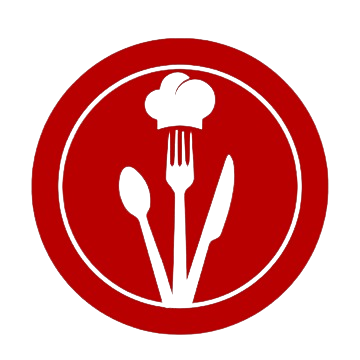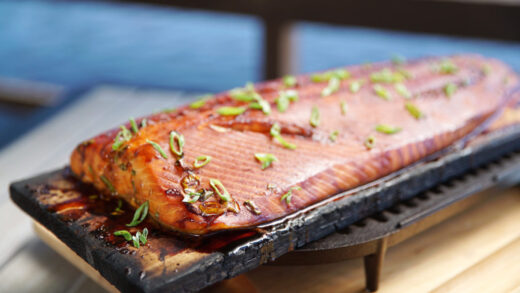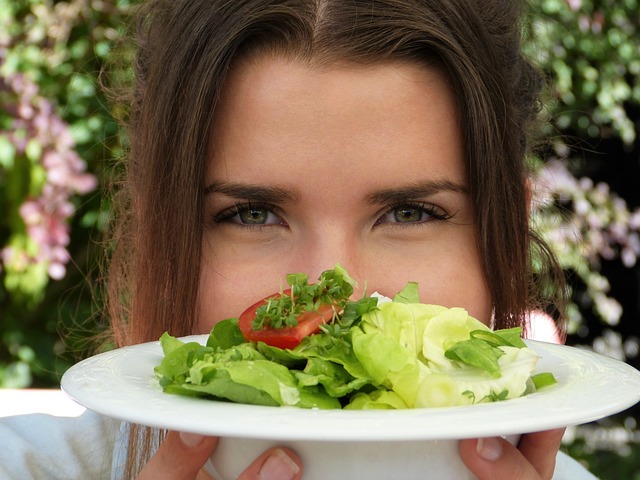Smoked Texas Beef Ribs are known for being tender, beefy, and mouthwatering. These flavorful ribs are seasoned with SPG and pack a generous helping of meat per bone. With each rib weighing 1-2 pounds, there’s no shortage of meat to feed your guests! So, fire up your smoker; we’re about to have a good time.

What are Beef Plate Ribs?

Anatomy: These massive ribs, commonly known as “plate short ribs, dino ribs (Flintstones reference), chuck ribs or “beef brisket ribs” are cut from the lower rib section near the belly of the animal. They should not be confused with beef back ribs which are located near the spine.
Different cuts: Butchers will cut these ribs into thin strips across the bone to form flanken ribs, which are popular in Korean cuisine. Alternatively, they may slice them into smaller sections creating short ribs.
Size and Weight: Unlike beef back ribs, plate short ribs are characterized by their thick, meaty layers and prominent bones. Remember those brontosaurus ribs that Fred Flintstone feasted on? Well, plate ribs resemble them weighing in at a whopping 1 1/2-2 pounds each. One rib can easily feed two people, or one very hungry person.
Marbling: Another defining feature of plate ribs is their fat content. The marbling, or ribbons of fat layered between the muscle fiber, making them indulgent and perfect for special occasions like summer holidays or cookouts. The meat is tender and has a rich beefy flavor with a sweet caramelized finish.
Sourcing: Plate ribs are popular in Texas! They are commonly sold in local stores like H-E-B. However, if you’d like to try them first, we recommend visiting a Texas BBQ joint. Other places to find them include warehouse clubs like Costco or Sam’s Club, or online meat purveyors like Snake River Farms.
What are the best ways to cook beef plate ribs?

Beef plate ribs can be cooked differently, depending on your preferences and available equipment. Here are some of the best ways to do it.
- Smoking: This is a popular way to cook beef plate ribs because it allows the meat to absorb the smoky flavor while slowly becoming tender and juicy. This cooking method is ideal because it helps to break down tough connective tissue and renders the fat. This process results in a tender, flavorful rib.
- Slow roasting: Slow roasting is an excellent way to cook plate ribs. Preheat your oven to 250 degrees F, season the meat with your preferred dru rub, and then slow roast the beef plate ribs in a covered roasting pan for several hours. They are done once they reach an internal temperature between 200-205 degrees F.
Beef Rib Success
- Preparation: Most beef plate ribs come pre-trimmed and packaged. However, if you get one fresh from the butcher, you might need to trim it. Use a sharp knife to remove the tough connective tissue, or silver skin, covering the meat. This connective tissue creates a smoke barrier and the silver skin is tough and inedible.
- Next, cut off any dangling bits of fat and flesh from the beef plate.
- Flavor: Choose modest rub like simple SPG (salt, black pepper, garlic).
- Binding Agent: Use a binding agent like yellow mustard, oil, hot sauce, or Worcestershire sauce to keep the dry rub in place. Apply a thin layer to the meat before applying the rub. Remember that a binding agent is not required, so if you prefer not to use one, that is 100% okay!
- Essentials: Prepare for a 6+ hour cooking time. Have enough fuel available, and choose a wood that works well with beef (see below for suggestions).
Ingredients
- 3-bone beef plate ribs
- Salt
- Black pepper
- Granulated Garlic (substitute with garlic powder)
- Oil
- Apple juice or Bourbon Spritz
- Spray bottle
Wood Suggestions: Oak, Apple, Hickory, or Alder wood chunks, chips, or wood pellets.
Beef Rib Preparation and Seasoning



- Trim off the fat cap on the meat portion of the ribs. Some butchers will trim it down a bit, but it’s a good idea to trim off the silver skin and any thick knobs of fatty tissue. Fat acts as a barrier to smoke. Unlike intra-muscular fat (marbling), it will not keep the meat moist and can become rubbery.
- Flip the rack of beef plate ribs over and you’ll notice a thick membrane covering the bones. I do not remove this membrane on beef ribs, but some pitmasters will. The process is similar to removing the membrane on pork ribs but might require extra effort based on its thickness. This step is not required, so feel free to leave it on if you’d like to.
- After trimming, blot the rack of beef ribs with a paper towel. Brush with a little oil or slather with 1- 1 1/2 tablespoons of yellow mustard (optional). I like to use hot sauce like sriracha or Yellow Bird to give it an extra layer of flavor.
- Season beef plate ribs well with dry rub. Let the ribs stand at room temperature until your smoker is up to temp. You can also preseason the ribs up to 1 hour before cooking.

Temperature:
- Prepare your pellet grill, smoker, or Big Green Egg for 250 degrees F. Set up according to manufacturer’s directions. Add your choice of wood. See above for wood recommendations.
- Plan on a 6-hour cooking time, with a rib doneness temperature of 200-205 degrees F. Have a reliable instant meat thermometer or temperature probe handy. You will need it!
- Once your smoker comes up to temp, place the beef ribs on the grates, bone side down. If you have room, set a drip pan underneath the grates to catch the rendered fat. Close the lid and let the ribs cook for 3 hours.
- During this time, the bark will set up. Remember not to touch the ribs during those 3 hours, but keep an eye on the temperature to ensure your smoker does not go above 250 degrees.


When to Spritz Smoked Texas Beef Ribs
- After 3 hours, examine your smoked beef ribs. You will notice that a nice bark has been set up. You might also see some dry patches forming. This indicates that you need to spritz the ribs with a little beef broth or your preferred liquid like pickle juice, apple cider vinegar, or apple juice. I recommend using a room-temperature liquid to keep the meat temperature stable. Cold liquids will dip the temperature and prolong your cooking time.
- Spritz with liquid (pickle juice, apple cider vinegar, etc.) onto the ribs. Keep a fair distance from the meat, and do not spray directly into it. Doing so will disturb the bark you’ve worked so hard to create. Think more along the lines of misting rather than spraying.
- Close the lid and continue cooking.
- You’ll also notice that the meat has started to pull back from the bones, and the bones will protrude more. That’s normal!
- Typically, I don’t wrap smoked beef ribs in butcher paper. Believe it or not, leaving them unwrapped shaves 30-60 minutes off of the total cooking time. If you’d like to wrap them after they reach the 165-degree mark, be aware that they will take longer to reach 200 degrees.

The Stall
- Meat temps will stall during the cooking process. I do not recommend wrapping these smoked beef ribs. Just give them some time. Remember that the cooking process can take 6 hours or more to complete.
- If running short on time, wrap the ribs with peach butcher paper once they reach an internal temp of 165 degrees F. Place them into your oven and cook at 275 degrees F until done. See below for optimal doneness temperature.

Doneness
- The smoked beef ribs are done once they have reached an internal temperature of 200-205 degrees.
- Use heat-resistant gloves to remove the beef ribs from the smoker. Place them onto a clean cutting board and lightly tent with aluminum foil. Let the ribs rest for 30 minutes. If serving them later, wrap them up and place them in a clean cooler for up to 2 hours.
- Use a sharp knife to cut through the ribs and serve. Some folks also like to remove the bones and slice the meat. See below for serving suggestions.

Storing Leftovers
Place leftover smoked beef ribs in an airtight container and keep them in the refrigerator for 4-5 days. When I’m ready to enjoy them again, I reheat them in the oven at 300 degrees F. until they’re nicely warmed through. It’s a great way to enjoy the leftovers without sacrificing flavor. If you liked this recipe, try our Pellet Grill Smoked Brisket!
What is the best way to serve smoked beef ribs?
These Smoked Texas Beef Ribs can be served in multiple ways depending on the occasion and your preferences. Here are some of the best ways to serve them:
- Main course: Serve them with BBQ sauce and your favorite sides, such as roasted vegetables, smoked potatoes, or coleslaw. They’re also great for special occasions like holiday dinners or backyard BBQs.
- Sandwiches: Slice or shred leftover beef rub meat in sandwiches or sliders. Top it with fried pickles, smoked onions, or barbecue sauce for a satisfying meal.
- Charcuterie board: Slice and serve with other smoked meats, nuts, and cheese on a charcuterie board.
Best Side dishes For Beef Ribs
Here are some great side dishes to pair with Smoked Texas Beef Ribs!

- 1 beef ribs 3-Bone Plate Rib Rack
- 1 tablespoon vegetable oil
- 4 teaspoons salt
- 2 teaspoons black pepper
- 1 teaspoon granulated garlic or garlic powder
- 1/2 cup apple juice for spritzing
-
Prepare your smoker for 250 degrees F. Add wood of choice.
-
Trim away the silver skin and knobs of fat from the ribs. Blot dry, and brush with oil.
-
Combine salt, pepper, and garlic. Season ribs thoroughly with the mixture. Both sides and edges.
-
Once the smoker is up to temperature, place the ribs bone-side down onto the grates. Close the lid and let it cook for 3 hours undisturbed. Check the temperature of your smoker, and adjust if needed.
-
After 3 hours, spritz with apple juice (or liquid of choice). Close the lid and continue cooking for an additional 2-3 hours.
-
Once the beef ribs reach an internal temperature between 200-205 degrees F, they are done.
-
Remove the ribs from the smoker and place them onto a clean cutting board. Tent with aluminum
Serving: 1g | Calories: 450kcal | Carbohydrates: 2g | Protein: 5g | Fat: 12g | Saturated Fat: 5g | Polyunsaturated Fat: 1g | Monounsaturated Fat: 1g | Cholesterol: 1mg | Sodium: 900mg | Potassium: 73mg | Fiber: 1g | Sugar: 4g | Vitamin A: 8IU | Vitamin C: 1mg | Calcium: 12mg | Iron: 1mg
#Smoked #Texas #Beef #Ribs #Derrick #Riches



